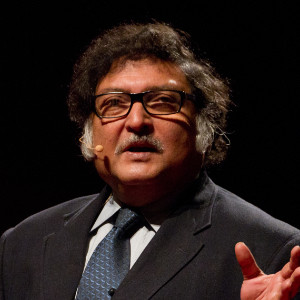
Professor Sugata Mitra is a professor of education and innovator who won the inaugural $1 million TED Prize in 2013. He has been credited with more than 25 inventions related to cognitive science and education technology, but is best known for the Hole in the Wall computer, a 1999 experiment... Read more
Professor Sugata Mitra is a professor of education and innovator who won the inaugural $1 million TED Prize in 2013. He has been credited with more than 25 inventions related to cognitive science and education technology, but is best known for the Hole in the Wall computer, a 1999 experiment that placed a basic computer three feet above the ground in a deprived area of New Delhi slum to evaluate the local children’s ability to teach themselves how to use it.
Professor Mitra believes that access to a single computer fosters more creativity and collaboration than traditional methods of teaching. He has named this theory Minimally Invasive Education and used the TED prize money to set up Schools in the Cloud, along with the Self-Organised Learning Environment, or SOLE, teaching programme, which uses a “Granny Cloud” of retired teachers to aid children’s learning via Skype.
Sugata Mitra’s other academic work includes papers on energy storage systems, zinc-chloride batteries, the human senses and Alzheimer’s. He obtained a PhD in Solid State Physics from the Indian Institute of Technology and has worked at Austria’s Technische Universität in Vienna, the Media Lab at Massachusetts Institute of Technology (MIT) and India’s National Institute of Information Technology (NIIT) where he is currently Professor Emeritus. In 2019 Professor Mitra retired as Professor and Principal Research Investigator at the School of Education, Communication and Language Sciences at Newcastle University. He was named the Brock Prize Education Innovation Laureate in 2022.
Sugata Mitra’s research has resulted in the training and development of over a million young Indians, amongst them some of the poorest children in the world. His Hole in the Wall experiment is the inspiration behind Indian writer Vikas Swarup’s debut novel Q&A, on which the Oscar-winning film Slumdog Millionaire is based.